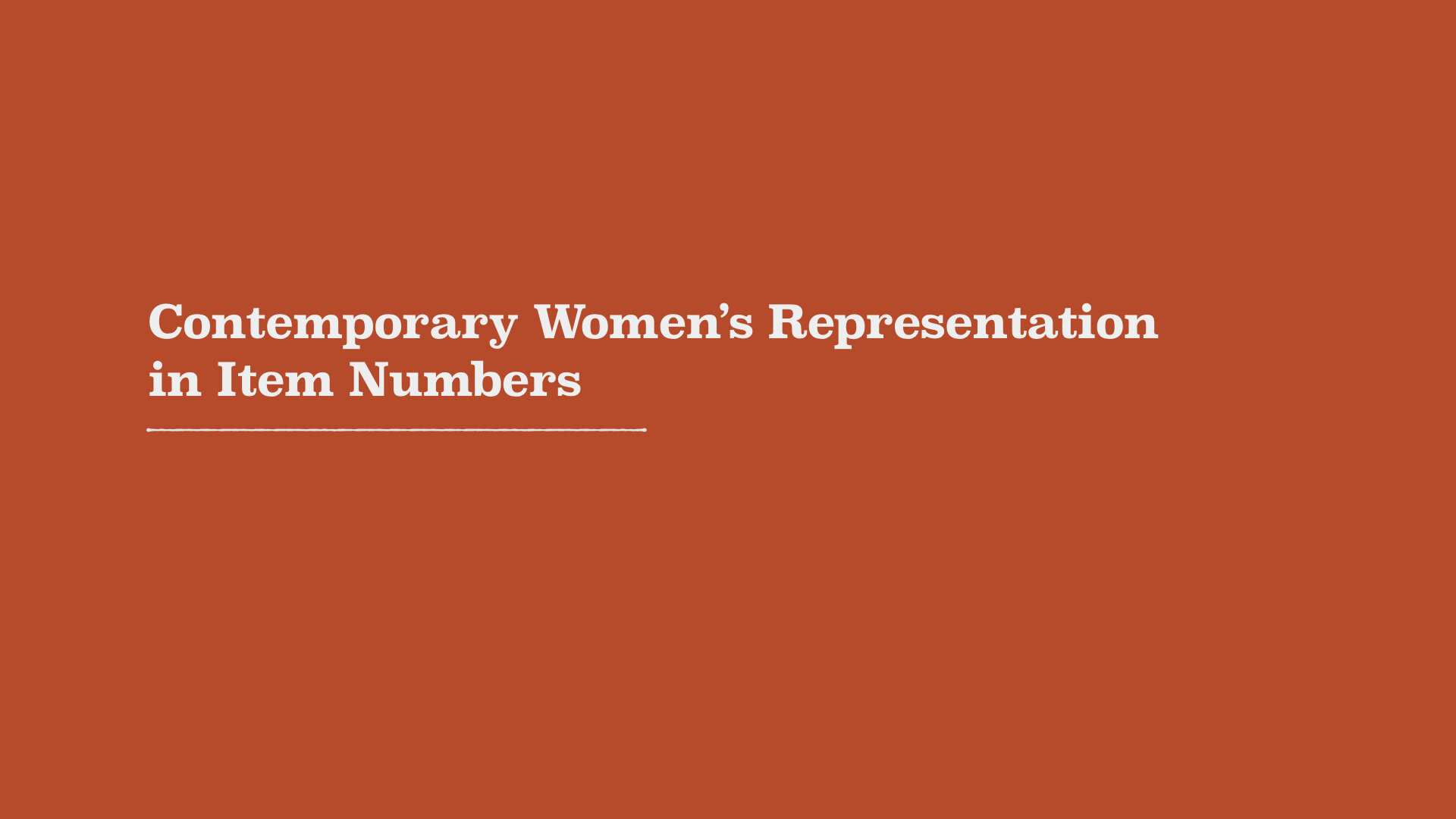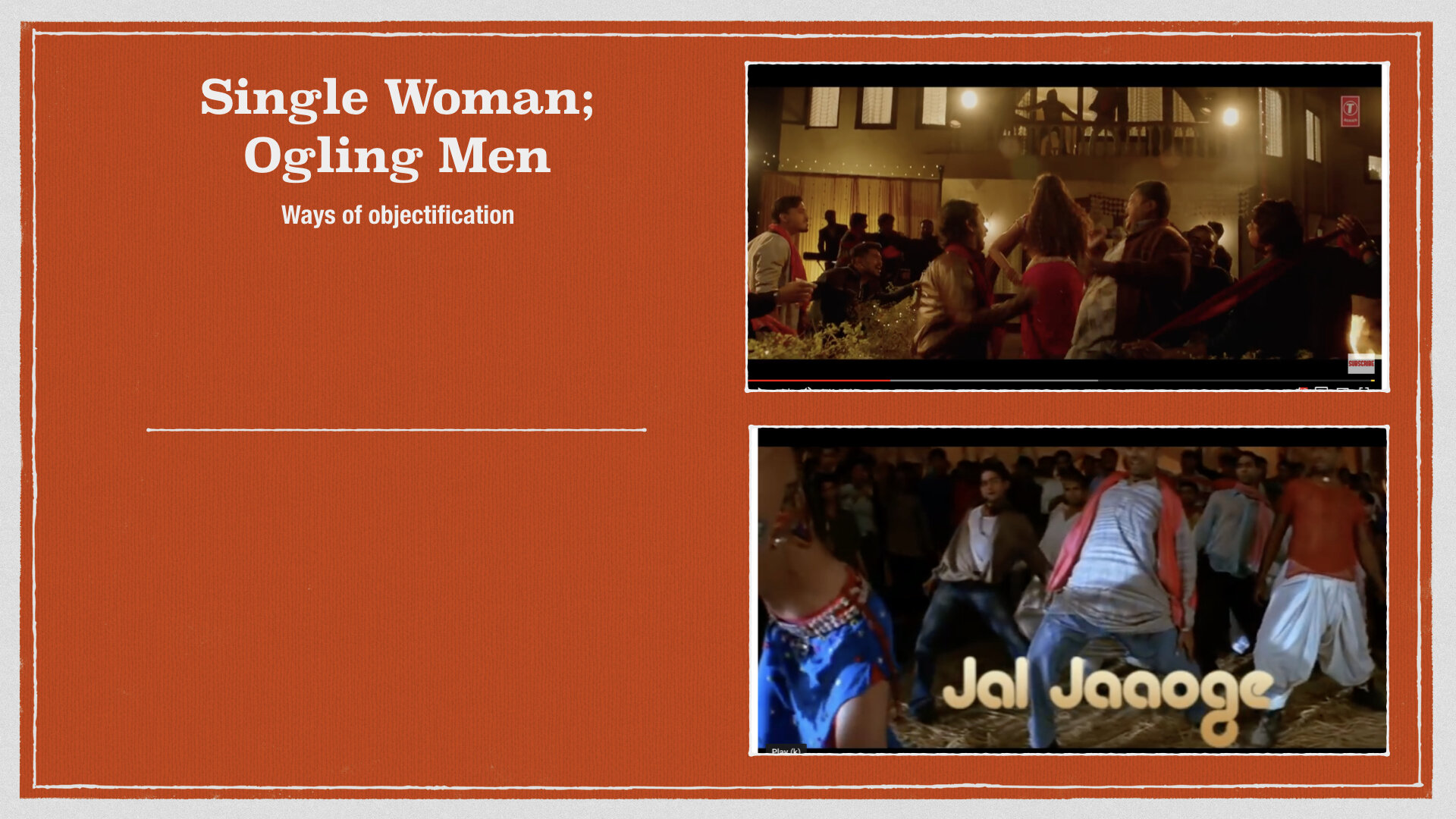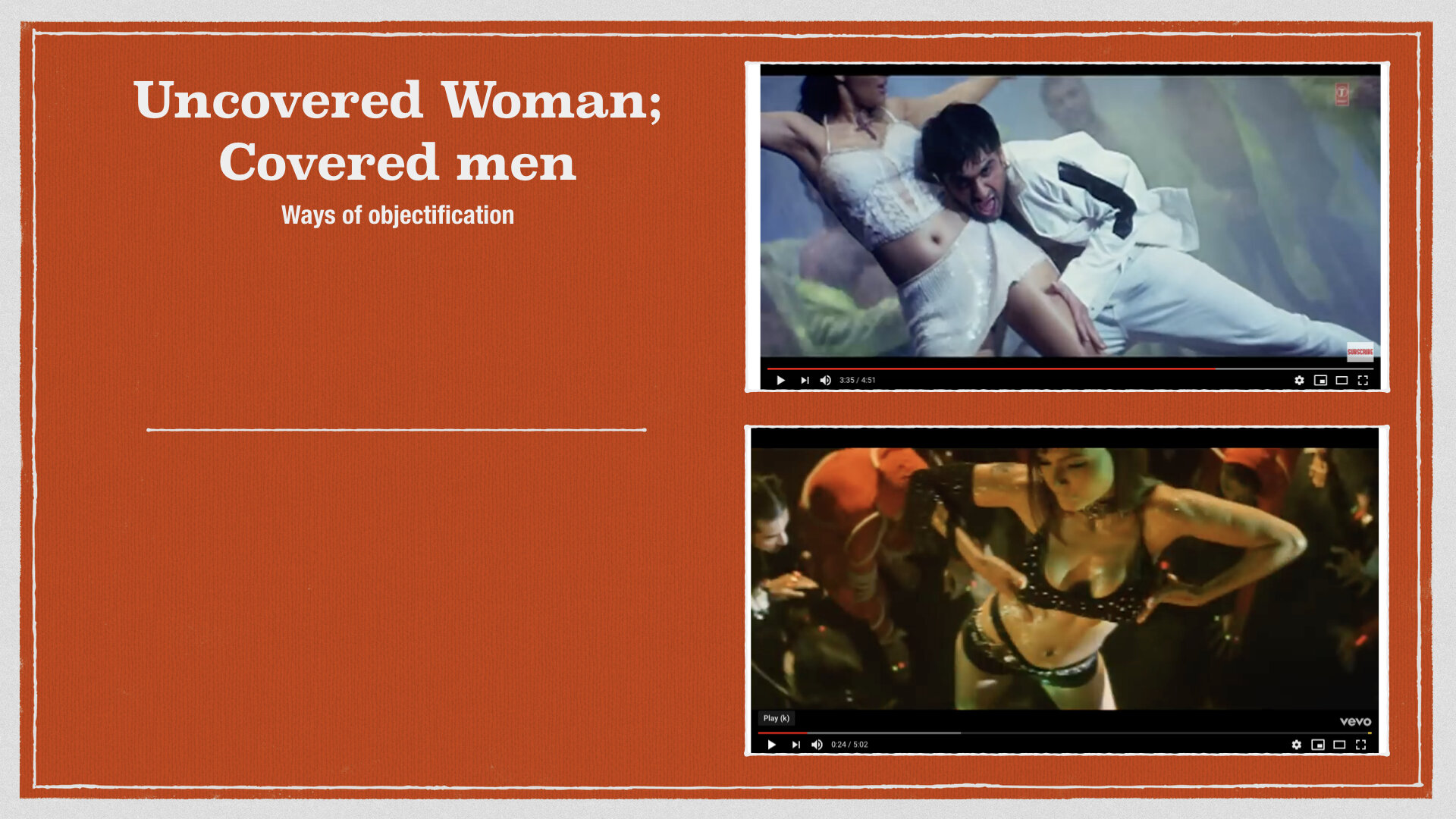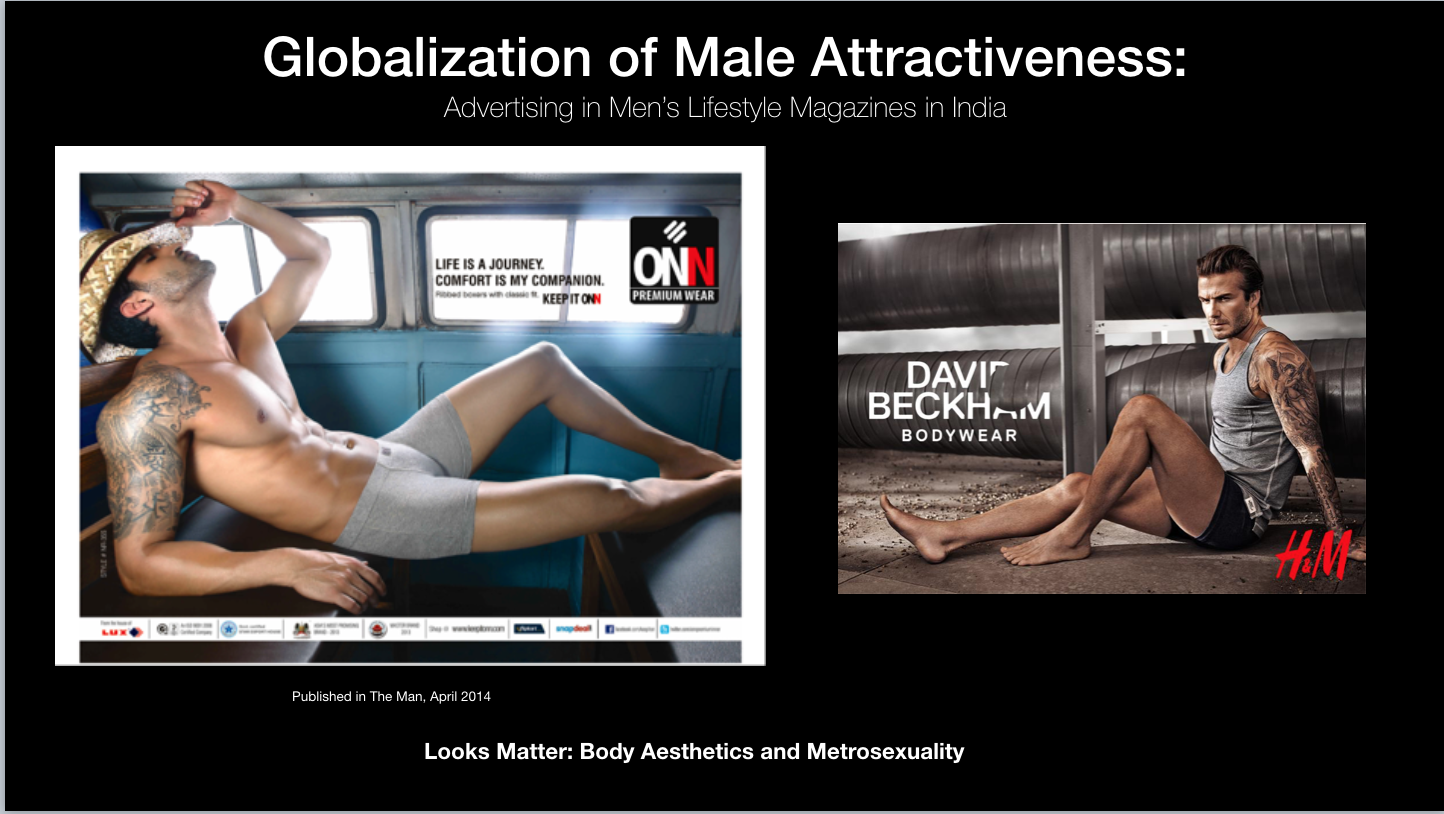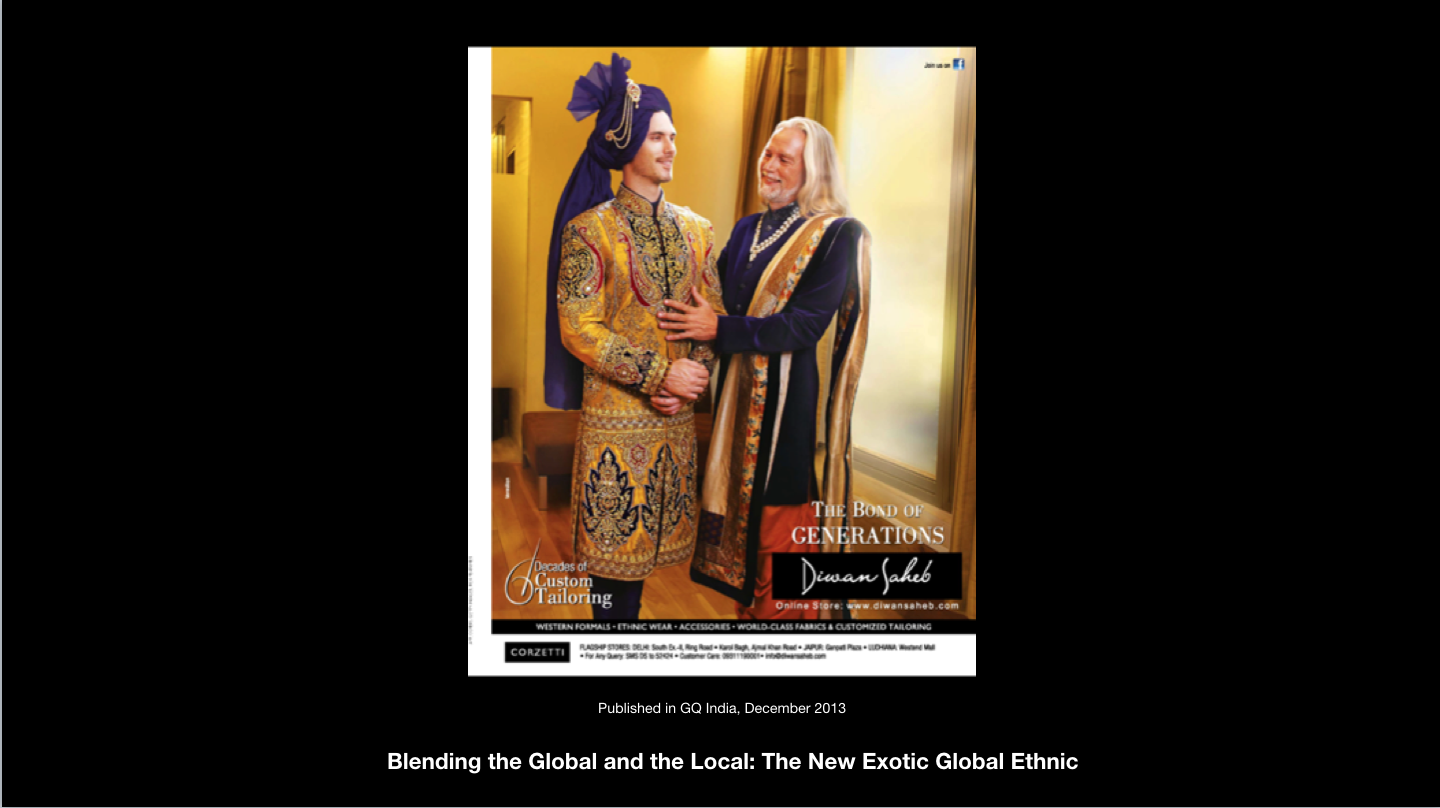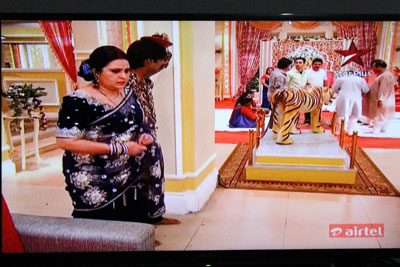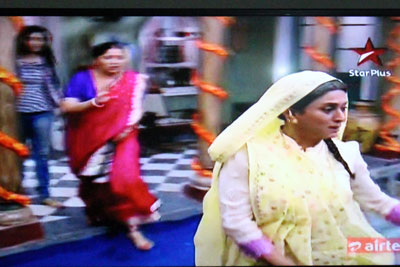“Item numbers” are controversial song and dance sequences that have gained popularity in Bollywood cinema in the last two decades. Women play a central role in item numbers. They are objects of male gaze and sexually objectified. Sexual objectification of women takes place through women’s insignificant appearance in cameo roles, their placement at the center of a group of lusting and ogling men, revealing outfits, camera angles that focus on women’s body parts, exploitation of white bodies, and the use of natural elements such as mud, water, fire on or surrounding women’s bodies. Item numbers over the years have transformed from being sensual to more pornographic.
Globalization of Male Attractiveness
Analyzing advertising from men’s magazines in India, one sees a certain kinds of western masculine ideals and body aesthetics are being adopted and reworked into advertising to appeal and facilitate consumption among middle and upper-class Indian men living in the urban centers of India. The contemporary construction of upper and aspirational middle-class masculinity includes size and hypermuscularity, fair skin/whiteness, and a view of self as global ethnic. This type of construction helps to globalize the male body and masculine ideal while also privileging whiteness and class in the local and global arena.
Bollywood Visualized
I did some data visualization on Bollywood.
Sounds of Los Angeles: Qawwali
It was wonderful to hear Qawwali as part of the music series Sounds of LA put together by the Getty Museum in Los Angeles. It is no doubt a celebration of multiculturalism in LA. Qawwali, a form of Sufi devotional music, which has roots in India and Pakistan, competes with many other popular musical genre from east and west, yet some how has managed to survive and found a new fan base. Nusrat Fateh Ali Khan, the best-known Pakistani Qawwal with a deep resonating voice helped to take this music genre to a newer younger audience and musicians. His music found its way into both Bollywood and Hollywood films.
Fitness as a Lifestyle
I went to the mall today to meet Rakhi who is a fitness instructor at the gym which is located inside the mall. I have been very curious about the fitness boom in India so wanted to talk to her about it. I was very impressed with the size, professional upkeep and facilities in the gym. Rakhi mentioned that this was just a mid-size gym, which looked pretty big to me, and that there was a bigger one in another locality.
Fitness, as Rakhi notes, is not yet a lifestyle in India. People usually exercise and go to the gyms for short term goals, such as when getting married or when traveling to beaches. It is more about appearance and looking good as opposed to being healthy and fit. Gyms in India can be quite expensive so they can only be afforded by a relatively smaller segment of the population. Free spaces such as public parks and paths for walking and jogging are still very few. Significant air pollution further adds to the problem of outdoor exercising. This is a hindrance for all, but especially for women, who need safe and easily accessible places for everyday exercises.
Indian Television: Family Dramas and Traditional Values
The primetime Indian television primarily focuses on family dramas. The popularity of soap operas focusing on traditional values and families reflect the cultural preference of the nation. Even though there are plenty of American and British programming on television, shows such as Diya Aur Baati Hum (We are like earthen lamp and its wick), Mere Angne Mein (In my courtyard), and Suhaani Si Ek Laadki (A pleasant girl) and Sasural Simar Ka (Home of Simar in-law's) which often show traditional households with extended families living under the same roof are more popular. Modern Indian household however is more nuclear, couples work outside the home, and live and aspire for a western lifestyle.
The primetime soaps often focus on the antagonist relationship between mother-in-law and daughter-in-law. Drama is further created through interaction with other family characters who are constantly plotting and scheming to create rifts among the family members. The family always overcome these and at the end stays together. In these television programs, an ideal daughter-in-law is one who obeys the mother-in-law, is sacrificing and looks after the family. At times when she works outside the home, she still caters to all the needs of the extended family. This ideal is still preferred by Indian families where arranged marriages are still the norm.
The families shown on television, whether traditional or modern, are often rich. They live in huge houses. Women wear expensive dresses and jewelry, the kind that ordinary people wear during special occasions such as weddings. Lives of farmers, poor and middle-class families are largely missing on Indian television. Television, like Bollywood films, has become a medium that reflects desires and aspirations of Indians and not the complex reality of everyday lives of people.
“Respect for Women”: The New Slogan in a Maligned City
The other day when I was traveling, I saw a taxi with a slogan “This taxi respects women.” I have seen this “respect for women” signs in many places in and around Delhi now. This seems to be the new mantra in a place which continues to see high level of rapes and physical violence against women and children. I applaud the effort and the heightened consciousness, but respect for women needs to be more than a slogan, women’s safety need to be a priority and things have to fundamentally change on the ground. This means stronger law enforcement and educational efforts for longterm attitude shift. Female feticide still continues; women continue to take unknown harmful substances hoping that would help them deliver a boy child, and young girls as young as two continue to get raped. It is a sad state of affairs, which unfortunately a slogan cannot fix.
Overcoming Challenges of Online Retailing: The Cash-On-Delivery Option
Online shopping has increased in India partly because major online retailers such as Amazon, snapdeal and Flipkart are providing easy and convenient ways to shop. They are also providing the option of “cash-on-delivery.” This is making customers feel more comfortable making online purchases. One of the biggest hurdles in India was and still is, the issue of reliable package delivery. Packages often don’t reach the customers on time or get lost or stolen. This creates hassles for both buyers and sellers. In the past, products advertised have not been the product received, fake and poor quality products have made customers skeptical about online shopping.
Now things are changing, more people are shopping online and getting better options and deals. Online retailers are finding innovative ways to attract customers. Amazon provided the incentive of 1Kg gold, a much desired item to Indian customers for downloading its app. The competition among online retailers is fierce. They are all trying to gain a market share.
Going to an Indian traditional market can be quite fun but is also quite stressful because of the traffic. In many stores, prices are not marked on products, thus they are open for interpretations and negotiations. For a busy customer looking for a good deal and convenience, online shopping is a great option. As internet connection improves, safe and quick delivery options further develop, more Indians will be buying online.
An Indian Solution: “Missed Call” Audience Voting on Television
On Indian television there are plenty of reality shows. Most are Indian versions of popular American and British shows. Television programs such as India’s Got Talent and Indian Idol often depend on audience voting like their American and British counterparts. In India, even though most people own a cellphone, those of lesser means use cellphones only to receive calls and not make calls as calling cost money. Since audience participation through voting is an important part of these programs, Indian television channels have adopted a unique way to engage the audience by making voting easy and convenient through “missed calls.” The introduction of "missed call" voting is said to have significantly increased viewer response to the reality shows.
Indian Puppet Tradition In Need of Support
I recently visited the Bhartiya Lok Kala Mandal, Udaipur. It has a wonderful array of puppets primarily from the Rajasthan region in the museum. A little more care and preservation of the puppets is required otherwise in the current condition, where they are collecting dust, they are likely to deteriorate. The puppets are known as Kathputlis in the region. There are many forms of puppets in India ranging from wooden to shadow puppets but their popularity is on a decline. There is an attempt by the government to revive these art forms but they are on a small scale and not professionally managed. The need to support, encourage and actively promote this art form is even greater now when people around the world are experiencing cultural homogeneity because of globalization. This is making them actively look for authentic cultural experiences. Tourists don't visit India to go to the malls, they want to experience Indian history and culture. Preserving art will not only bring in tourism dollars, it will also help preserve Indian culture.
There were a group of older children visiting the center on a school trip the day I visited the museum. Most of them were taking selfies with the puppets with their cell phones. Later watching them enjoy the puppet show gave me hope that this cultural art form might still survive in spite of threats from other modern forms of entertainment like the video games.
India’s Soaring Real Estate Market
The land for development in India is limited, the population is over a billion, the money made through legal and illegal means is plenty, and the aspirations for western style lifestyle and comfort is on a rise. All these have fueled an unprecedented growth in the real estate market. Real estate ads promise luxury homes but rarely do they deliver one. Shoddy construction, incomplete work, land and other forms of disputes, unprofessional and untrained labor, often affect what is delivered. In spite of all this the builders are making a huge amount of money and so are the property owners who have seen their property price rise 4-5 times in a matter of few years.
The Fitness Boom in India
Health consciousness and the need to be fit is on a rise in India. Fitness centers and gyms have mushroomed all over India, in small towns and big cities. Yoga, Aerobics, and Zumba are becoming popular among the middle and upper class public. Advertising for diet pills, supplements for building muscles, and other similar products have also increased. On Indian television, infomercials for weight-loss and weight-gain supplements have particularly increased. The weight-gain supplement advertisements exploit the insecurities of Indian men who are not tall and big and promise them increase in height and weight, which is then linked to their success in life, particularly with women. Weight-loss ads on the other hand exploit the insecurities of women, particularly housewives.
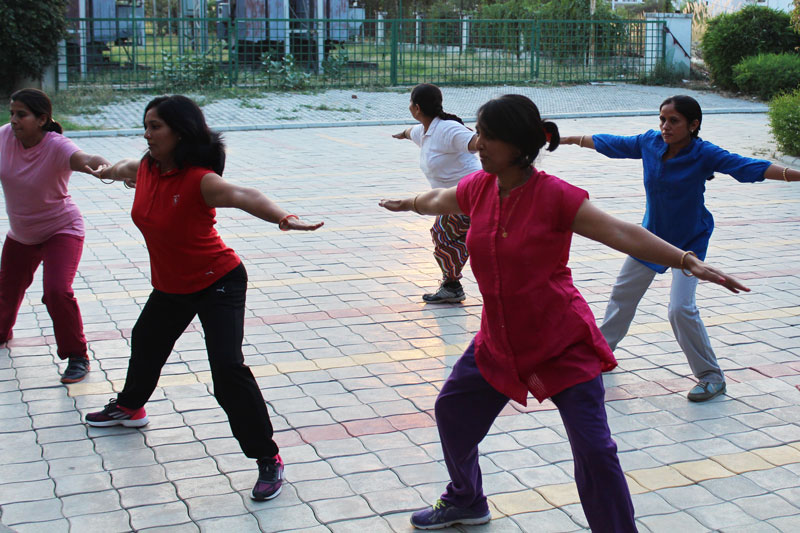
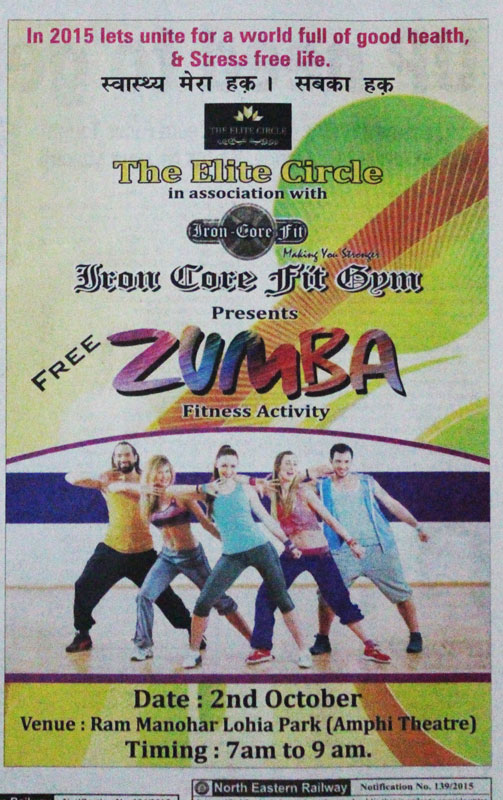

The “Unisex” Washing Machine: Easing Indian Men into Doing Domestic Chores
Cooking, cleaning, laundry and other household chores are mostly done my women in India. Traditionally Indian men have not engaged in these “feminine chores”. In patriarchal society like India, masculinity is linked to work outside the home and femininity to domestic work. Advertisers are helping men feel comfortable doing domestic chores through positioning of products such as washing machines as “unisex.” Several washing machine and washing detergent ads in India now show men doing the laundry with a message that it is easy to do. Women are often shown helping and instructing men how to operate the washing machine to resolve a stain crisis.
The Cost of Education in India
The cost of education is currently a big debate in the United States but in India the issue has rarely been raised. Parents are taking out huge amount of loans at a very high interest rate from the banks and other places for higher education because they fundamentally believe that education is a ticket to a better life for their children. Thousands of private colleges (accredited and non-accredited) have opened up to cater to the demands of a growing population that are not being fulfilled by central and state universities. Some deliver decent curriculum while others are in the business to make money. They often offer the highly sought after engineering, computer science and MBA degrees without much focus on quality. As a result, these students learn very little, and struggle to get jobs and repay their loans. Private tutors and centers have also been growing for quite sometime now. This is an additional cost that is incurred by parents to help their children get into highly competitive universities and other professional fields.
A Shift from Debit Culture to a Credit Culture
Since the last few years I have been noticing spending patterns of middle-class Indians. Incomes have grown, so have the opportunities for loans and credits. As a result, Indians are spending like never before. Gone are the days when people saved for years to purchase big-ticketed items, people these days are fulfilling their needs and wants through loans and credits. Recently, I was talking to a business professor in India who mentioned, “Indians no longer look at the MRP (Maximum Retail Price) of the items they buy, they focus on the EMI (Equated Monthly Installment)". Consumerism and instant gratification are on a rise, and the use and throw culture has started to seep in too.
Swachh Bharat Campaign
Once at the Mumbai airport, when I was getting out of the airplane, an American woman who frequently visits India commented, “it feels like a dirty diaper has just hit you.” The stench in the air was bad. A part of me agreed with her and the other part felt a little embarrassed and offended.
India has a cleanliness problem. With more than a billion people the pressure on the system is immense. Public spaces are inefficiently and poorly managed and there is extreme shortage of public restrooms and toilets. This has created an environment that is quite dirty and polluted.
It is good to finally see cleanliness put on government’s agenda. The Modi government launched the “Swachh Bharat” (Clean India) campaign in October 2014, the results of which are yet to be seen nevertheless it is an important first step. The government is trying to engage the public in its efforts through social media campaigns. Public awareness campaigns and engagement are necessary for success. In the long run public attitudes and behaviors will have to be changed. Most Indians keep their homes clean, but many do not hesitate to spit, defecate, urinate, and throw garbage in areas that do not belong to them. Public education about health and hygiene, fines and enforcement of pollution-related laws will have to be put in place for cleaning India's air, land and water.
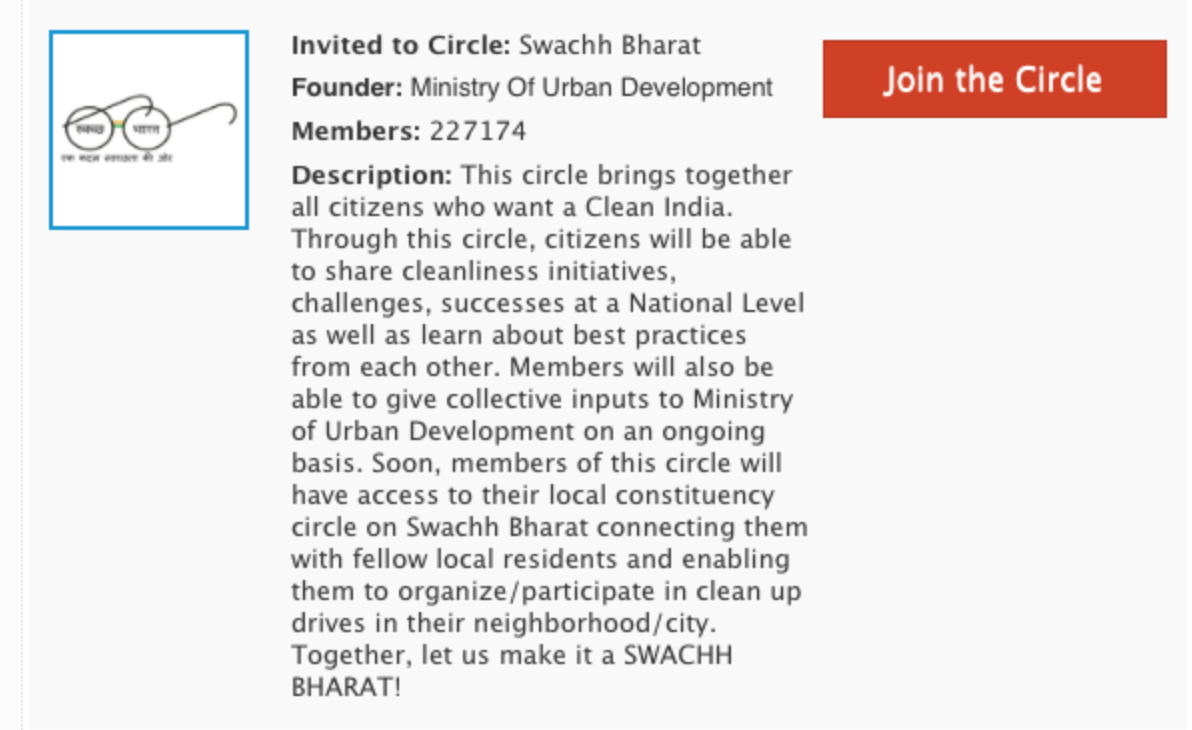
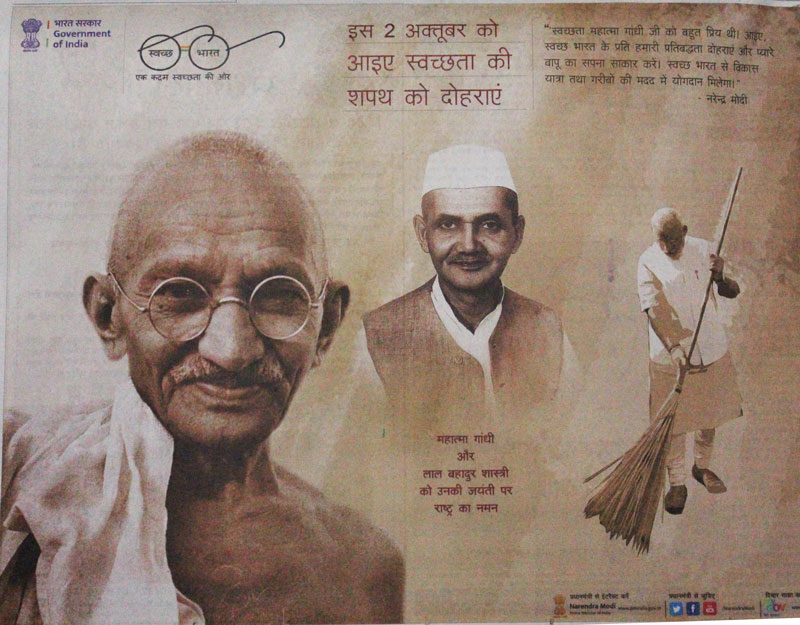
Blaming the Victim and the West
After the brutal rape of a woman on a bus in Delhi in 2012 and many subsequent cases of rape and sexual violence against women and children in India there has been quite a bit of uproar but there hasn't been enough soul searching. There is a culture that ignores violence against women and normalizes everyday sexual harassment. Things cannot change without strong government actions and enforcement of laws. Consequences for actions are important for deterrence.
In the wake of these tragic incidents of sexual violence against women, it has been particularly disturbing to hear comments made by some prominent people including politicians and celebrities who seem to be blaming westernization of women, women clothes, and other western influences for such incidents instead of blaming men who engage in such heinous acts.
In a recent incident of rape of a woman who took a Uber cab, Indian media have been constantly highlighting Uber as the problem, not the man, who is secondary in the story. Externalizing and blaming others will not solve India’s rape crisis; actions have to come from within to ensure women’s safety. Women need to be safe and feel safe in order to be productive members of Indian society and reach their full potential as human beings. Cultural attitudes towards women and their worth in society need to change. Early gender education is absolutely necessary in homes and in schools for long-term changes in a society where sexes remain segregated in everyday life and activities.
Religion and Brands
Religion is powerful. Brands are powerful. They both rely on strong believers and followers. In India, a deeply religious country, it is not uncommon to see the two coming together resulting in successful business ventures. T-Series made a fortune at one time selling music cassette tapes and CDs with religious songs. It then branched into number of other products including bottling Ganga jal. The Ganges water is considered holy by the Hindus and is used in various religious ceremonies. The Ganges is extremely polluted now but nevertheless this does not stop the believers from bathing and buying Ganges water for religious purposes.
Recently, I was introduced to the Patanjali brand, which makes a range of Ayurvedic and organic products. Yoga Swami Ramdev who has a big following in India and abroad is now marketing this brand of products. If managed well, with consistency of message and quality of products, it has the potential to be very popular among Indians who strongly believe in natural remedies and organic products. It was fascinating to hear people talk about the Patanjali products and the deep belief they have in Swami Ramdev. The company aims to do more than sell products, which it notes in its mission statement:
“We are confident that the campaign for upliftment of the nation and the conservation and protection of the ageless science ayurveda, been launched with the support of the common man would ultimately reach its goal. The campaign is not commercial but all in the public interest. Scores of the volunteers are giving relentless service free of cost for the success of the massive ‘yagna’.”
Welcome to my blog
I came to the U.S. from India more than a decade ago. Since then I have been shuttling between the two countries. Every time I go back to India, I am surprised at the pace of growth. New malls, roads and other structures are constantly being built. People seem to be making more money and having new opportunities for growth. Yet, it is quite clear that the growth is not even. The rich have become richer, and the gap between the rich and the poor has grown. The cost of living has gone up immensely. When I came to the U.S., I used to convert the price of everyday items from dollars to rupees and would be shocked at how expensive the items were. These days, when I go back to India, I do the opposite. Now I am shocked at how expensive things are in India.
With this blog, I hope to present the changes, complexities and contradictions of globalizing India.


